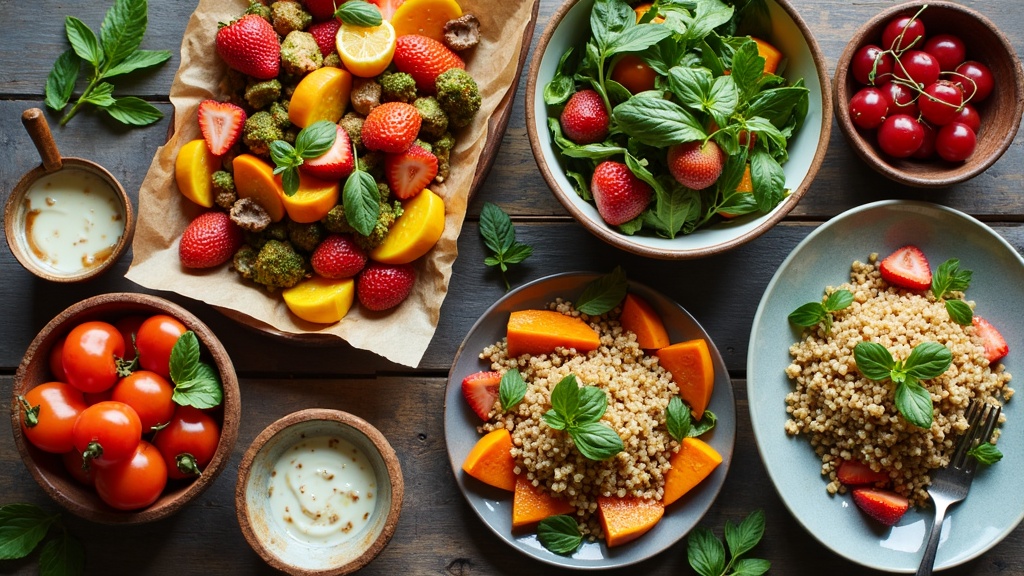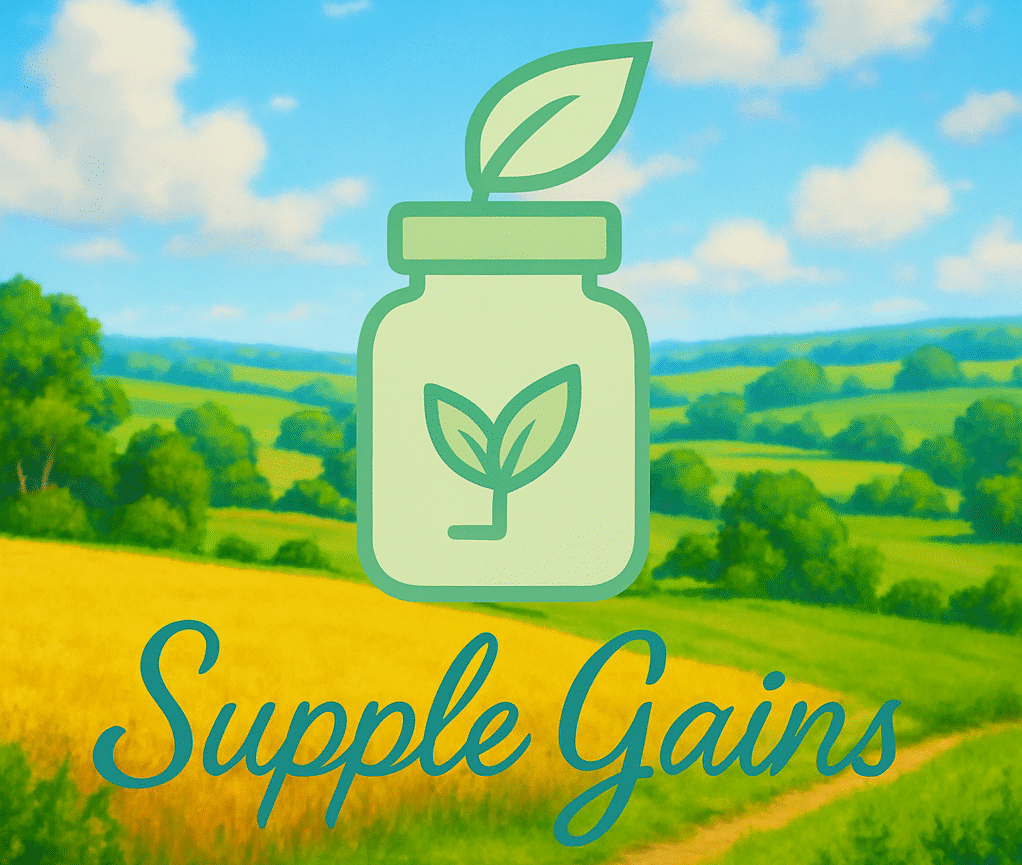Eating plantbased while also avoiding gluten might sound tricky, but with all the creative options out there, it’s actually become pretty easy (and super tasty).
Whether you’re brand new to this way of eating, cooking for someone with celiac disease, or just looking for some lighter, more colorful meals, keeping things glutenfree and plantbased is something anyone can enjoy.
Let’s jump in to what works, why to think about these recipes, and how to get started without feeling overwhelmed.

Why Try Gluten-Free Plantbased Recipes?
Following a glutenfree and plantbased diet isn’t just about restriction. A lot of people make the switch for several reasons: managing gluten intolerance or celiac disease, improving digestion, or just wanting to eat more fruits, veggies, and whole foods.
You’ll also add variety and nutrient-rich options to your meals, especially if you’re trying to cut down on ultraprocessed stuff.
Some research shows that plantbased eating has benefits like lower cholesterol and easier weight management, and it tends to be higher in fiber and important micronutrients.
For anyone with gluten sensitivity, a glutenfree menu is nonnegotiable. These days, there are a ton of accessible swaps that keep everything both fun and healthy. Think hearty grain bowls, colorful salads, rich stews, and yes, dessert too!
GlutenFree vs. Plantbased: What Do These Terms Really Mean?
Just to clear things up: a glutenfree diet skips anything made with wheat, barley, rye, and a handful of other grains containing gluten, a protein that can trigger serious issues for some people.
Plantbased simply means your meals center around vegetables, fruits, grains, nuts, seeds, and legumes, while skipping animal products or keeping them very minimal.
Making something both glutenfree and plantbased just takes a little attention to detail. Rice, quinoa, buckwheat, millet, and corn are all naturally glutenfree grains.
Legumes like lentils and chickpeas are packed with plant protein. Veggies, fruits, nuts, and seeds are all fair game.
Sometimes even seasoned planteaters overlook things like soy sauce or oats that aren’t certified glutenfree, so reading labels and using trusted brands helps keep meals safe for everyone.
Getting Started: Staples for a GlutenFree Plantbased Kitchen
Having the right basics can make your recipe routine so much easier. When setting up your kitchen, stick to glutenfree whole grains and a bunch of simple, fresh ingredients. Here’s a quick starter list:
- Whole Grains: Quinoa, brown rice, millet, certified glutenfree oats, cornmeal, and buckwheat.
- Legumes and Pulses: Lentils, black beans, chickpeas, split peas, and pinto beans. These boost protein and are pretty filling.
- Vegetables and Fruits: Go wild. Fresh, frozen, and even canned (as long as you check for any sneaky gluten additives) all work.
- Nuts and Seeds: Almonds, walnuts, cashews, chia, flax, pumpkin seeds, and hemp seeds.
- Plantbased Milks and Yogurts: Almond milk, oat milk, coconut yogurt. Check for glutenfree labeling if you’re unsure.
- Flavor, Sauces, and Herbs: Coconut aminos (instead of regular soy sauce), tahini, olive oil, apple cider vinegar, mustard, and tons of herbs and spices.
Stocking up on a few of these basics lets you throw together all sorts of recipes at a moment’s notice.
If you’re new to glutenfree eating, keeping a variety of grains and legumes makes it easy to throw together satisfying bowls, stirfries, and salads.
Over time, you’ll discover your flavor favorites and can experiment with combining greens, grains, and sauces to build a lineup of go-to dishes.
Dry goods like beans, lentils, rice, and oats can be bought in larger packs and stored for quick, budgetfriendly meal prep. With these staples, keeping things interesting is a breeze.
Quick Guide: Building a Balanced GlutenFree Plantbased Meal
Making a filling meal that checks all the boxes is way easier when you follow four main pieces: grains, plant protein, lots of veggies, and some kind of healthy fat. Here’s my formula for building a meal bowl that always works:
- Choose a Glutenfree Grain Base: Quinoa, brown rice, or millet are great. They set up a sturdy base and give you good texture.
- Add Plant Protein: Beans, lentils, tofu (make sure it’s glutenfree), or edamame go a long way for protein and satiety.
- Layer in Veggies: Roasted, sauteed, or even raw. Mix colorful options like spinach, tomatoes, broccoli, carrots, and bell peppers.
- Healthy Fats: Think avocado, tahini drizzle, a handful of nuts, or a dollop of hummus.
- Extras & Toppings: Lemon juice, fresh herbs, nutritional yeast, or glutenfree hot sauce for an extra punch of flavor.
This formula isn’t just good for bowls. You can switch it up for tacos, salads, stirfries, and even breakfast recipes.
For breakfast, blend cooked grains with non-dairy yogurt and fruit for a twist on overnight oats.
Common Challenges & Easy Solutions
Anyone who has tried glutenfree, plantbased eating knows it can sometimes feel like there are a lot of “can’ts.” Here’s how to handle the hiccups:
- Baking Without Gluten: Swapping regular wheat flour for a glutenfree blend works in most muffins, pancakes, and even cookies. Using oat flour or almond flour can bring a tender texture, but every swap is a little different, so experimenting helps.
- Hidden Gluten: Salad dressings, sauces, and some plantbased meat alternatives sometimes sneak in wheat, especially in soy sauce or malt vinegar. Double-checking ingredient lists and choosing glutenfree reliable brands keeps things safe.
- Eating Out: Restaurants are way more accommodating than they used to be. Checking in with the kitchen and sticking to simple veggierice dishes, salads (without croutons), or steamed plates is usually a safe bet.
- Getting Enough Protein: Plant-based protein sources like beans, lentils, and tofu are naturally glutenfree. Toss them in salads, wraps, or soups to keep meals filling. Consider using hemp seeds, chia, or pumpkin seeds to add even more protein to your meals and snacks.
Baking Without Gluten
Combining glutenfree flour blends with a bit of ground flaxseed or chia (for binding) helps make muffins, cookies, and pancakes less crumbly.
Mashed banana or applesauce also works as a simple egg replacer, and can make baked goods extra moist.
Try experimenting with almond butter or peanut butter for added richness in your glutenfree treats, or use pureed sweet potato as another binder and flavor booster in baked goods and pancakes.
Hidden Gluten in Packaged Foods
It’s easy to pick up glutenfree crackers or breads, but not all brands play by the same rules.
Stick with certified glutenfree options and always doublecheck labels to steer clear of any accidents.
When in doubt, fresh whole foods keep it simple.
For safer snacking, make your own trail mix with nuts, seeds, and dry fruit, or pop your own popcorn for a glutenfree, plantbased treat.
Simple Recipes to Get Started
Lining up a few easy recipes takes the stress out of weeknight cooking. Here are some favorites:
- Chickpea Salad Wraps: Mash cooked or canned chickpeas with diced celery, carrots, veganaise, lemon juice, and fresh herbs. Serve in lettuce leaves or glutenfree wraps for an easy lunch.
- Stuffed Bell Peppers: Halve and deseed peppers, then roast and fill with a mixture of cooked quinoa, black beans, corn, salsa, and avocado. Add a sprinkle of nutritional yeast for a cheezy flavor boost.
- OnePot Lentil Soup: Simmer red lentils with carrots, tomatoes, spinach, garlic, cumin, and veggie broth for a comforting, hearty bowl that ticks all the glutenfree and plantbased boxes.
- Banana Oat Pancakes: Blend ripe bananas, certified glutenfree oats, a splash of almond milk, and a pinch of baking powder. Cook on a skillet for fluffy, fiber-rich pancakes. Top with berries or nut butter for a filling breakfast, and freeze leftovers for busy mornings.
Cool GlutenFree Plantbased Substitutions
One of the best things about eating glutenfree and plantbased is getting to try out creative swaps. Here are a few to try:
- Rice Paper Instead of Tortillas: Works great for filling with fresh veggies, herbs, and tofu for a quick rollup lunch. Dip the rice paper in warm water and fill with your favorite combo of fresh crunchy vegetables.
- Cauliflower Rice or Zoodles: Lighten up stirfries and pasta dishes with these veggiebased options. They’re super filling and grainfree.
- Chia or Flax Eggs: Mix one tablespoon of seeds with water to replace an egg in most baking recipes.
- Coconut Aminos for Soy Sauce: This swap keeps stirfries and salads glutenfree but still delivers that umami flavor. Add it to dressings, marinades, and dips.
Plus, you can use things like sliced sweet potato or portobello mushrooms as burger “buns,” or bake crispy chickpeas for croutons in your salads.
Try polenta rounds as a base for canapés or mini pizzas. The options for glutenfree, plantbased swaps are practically endless and add a lot of excitement to your meal rotation.
Frequently Asked Questions
Certain questions always come up with plantbased, glutenfree eating. Here are some straightup answers based on my own experience:
Question: Can eating glutenfree and plantbased still keep me full?
Answer:
Absolutely. Using hearty grains, beans, and healthy fats like avocado or nuts means plenty of fiber and lasting power. Balanced meals are key, so you don’t end up hungry right after eating. For longer-lasting satiety, try combining your carb sources with proteins and a bit of fat in every meal.
Question: Is it hard to find glutenfree plantbased snacks?
Answer:
It’s easier than ever! Fruits, nuts, roasted chickpeas, rice cakes, and lots of storebought crackers or bars fill the snack gap. Always watch labels, since gluten can hide in unexpected places. Making your own granola or energy bites with oats, dates, and seeds is also a fun and easy option.
Question: Will plantbased glutenfree baking taste weird?
Answer:
Not at all! Oat flour, almond flour, and good glutenfree baking blends taste awesome in sweet or savory recipes. Using spices, pureed fruit, and natural sweeteners keeps everything flavorful and moist.
Test different combinations and you’ll stumble upon some favorites that the whole family will love.
Wrapping Up
Glutenfree plantbased recipes invite you to mix things up and enjoy loads of new flavors and textures.
By stocking simple essentials and building meals with whole, colorful ingredients, you open up a world of satisfying and nourishing dishes.
If you’re looking to shake up your usual routine or need to work around dietary needs, my go-to advice is to keep things easy, try new things, and have fun with it; the results are usually pretty delicious and totally worth it.
With just a bit of planning, the world of plantbased, glutenfree eating is full of color, flavor, and healthy possibilities!
